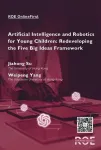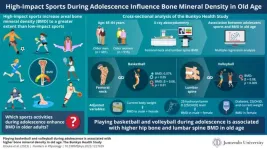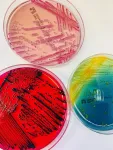(Press-News.org) Mycelial fibers, the fibrous cells found in fruiting mushroom bodies, have gained momentum as a sustainable material for making leather and packaging owing to their excellent formability. Recently, a team of researchers from Shinshu University, Japan, has found a simple way of obtaining mycelial fibers, called “mycelial pulp,” from fruiting mushroom bodies and bleaching them using sunlight while keeping their mycelial structures intact.
Every year, humans generate millions of tons of waste, and almost 38% of that waste ends up in a landfill. A significant portion of it is made up of plastic or petroleum-based materials that can neither decompose nor degrade with time. This has led scientists to develop materials that are effective yet good for the environment.
One such alternative and renewable resource is mushroom-based materials. The root-like fruiting bodies of mushrooms, also known as mycelial fibers, have shown promising results as the new age, eco-friendly material for a wide range of consumer and industrial applications. The mycelium fibers from the fruiting body contain proteins, chitin, and polysaccharides, which make them ideal for making packaging materials, soundproofing, textiles, and much more. They are not only versatile but also have low environmental impact, are biodegradable, and have a low cost of production. However, conventional chemical or mechanical treatments used to obtain mycelium fibers have notable shortcomings. Many extraction processes tend to give the materials an unwanted color and often destroy their intricate mycelial structures, thereby limiting their nanoscale applications.
Now, a recent ACS Sustainable Chemistry & Engineering paper, made available online on 21 October 2023 and published on 6 November 2023, provides a simple and effective way of obtaining mycelial pulp and fibers from mushrooms without destroying their structure.
“Mushrooms, previously known primarily as a food resource, will now be utilized in everyday household items, allowing people to choose products that are safe, reliable, and environmentally friendly,” says Assistant Professor Satomi Tagawa from the Faculty of Engineering at Shinshu University, who led this study.
Dr. Tagawa and her team members, Dr. Hiroya Nakauchi, recipient of the Research Fellowship for Young Scientists of Japan Society for the Promotion of Science (JSPS) and Dr. Yoshihiko Amano, Professor at the Faculty of Engineering at Shinshu University, present a novel way of extracting the fibers which ensures that the mycelial structures remain intact.
The team treated the fruiting bodies of enoki mushrooms and the inedible reishi mushrooms with sodium hydroxide and hydrogen peroxide. They then bleached (or decolorized) the obtained substances by exposing them to sunlight. The now white material was subjected to ultrasonic treatment to defibrillate the pulp at a mycelial level. This process produced a dispersion containing micrometer-sized mycelium fibers with intact mycelial structures, as verified by Fourier-transform infrared spectroscopy.
The fibers obtained via this process showed excellent deformability and could be used for designing products like 3D porous sponges, 2D films, and 1D yarns.
Apart from obtaining a versatile mushroom-based material, this simple approach makes a valuable addition to the scrap-and-build approach for fabricating mushroom materials, which can complement the existing bottom-up approaches. “This technology has opened possibilities for upcycling unwanted by-products generated by the mushroom industry and making mushroom materials more circular and easier to reuse. We believe that further research on such sustainable materials and methods could create new industries, provide employment opportunities, and revitalize local communities,” remarks Dr. Tagawa, highlighting the scientific and social impact of their findings.
We hope that this research will help reduce waste on our planet and promote the bioeconomy!
###
About Shinshu University
Shinshu University is a national university founded in 1949 and located nestled under the Japanese Alps in Nagano known for its stunning natural landscapes. Our motto, "Powered by Nature - strengthening our network with society and applying nature to create innovative solutions for a better tomorrow" reflects the mission of fostering promising creative professionals and deepening the collaborative relationship with local communities, which leads to our contribution to regional development by innovation in various fields. We’re working on providing solutions for building a sustainable society through interdisciplinary research fields: material science (carbon, fibre and composites), biomedical science (for intractable diseases and preventive medicine) and mountain science, and aiming to boost research and innovation capability through collaborative projects with distinguished researchers from the world. For more information visit https://www.shinshu-u.ac.jp/english/ or follow us on X (Twitter) @ShinshuUni for our latest news.
END
School connectedness – the degree to which students feel part of their school community – influences more than grades. For Black students, it’s a protective factor against depression and aggressive behavior later in life, according to a Rutgers University-New Brunswick study.
“Our data provide fairly strong evidence for the idea that the experiences Black adolescents have in their school impacts their long-term mental health,” said Adrian Gale, an assistant professor in the Rutgers School ...
Atrial fibrillation (AF) is a major global health concern impacting millions and causing symptoms like palpitations, dyspnea, fatigue, dizziness, and chest discomfort. Furthermore, these symptoms reduce patients’ quality of life and lead to increased mortality and morbidity. The medical community agrees that epicardial adipose tissue (EAT), chronic inflammation, imbalances in the autonomic nervous system (ANS), stretch-induced fibrosis, and genetic alterations are the main factors that influence AF pathogenesis. Despite extensive research efforts focused on uncovering the underlying mechanisms ...
Just like computers, the Internet, and smartphones have become commonplace in our daily lives, artificial intelligence and robotics (AIR) are the next technologies in line set to drastically change how we interact with the world and among ourselves. Various AI-driven applications are already in widespread use, such as Siri, Google Assistant, and ChatGPT, and both industrial- and consumer-grade robots are becoming increasingly capable and accessible.
In our modern societies, where people rely more and more on AIR systems to perform tasks, it’s essential to prepare children and teenagers to understand ...
Loss of bone mineral density (BMD) with age is an important cause of osteoporosis (deterioration of bone tissue), which has been reported as one of the leading causes of falls among older adults in Japan. This leads to fractures that require long-term nursing. Prevention of osteoporosis in the aging population can thus help decrease the burden of disease and healthcare costs substantially.
Early lifestyle habits can largely influence health and disease onset in old age. In this regard, physical activities ...
Within the next 10 years, it’s projected that up to 50% of United States adults will be affected by obesity, which is associated with cognitive impairment and dementia.
Investigators at Michigan Medicine found that people with obesity who underwent bariatric surgery had stable cognition two years later.
Researchers say it suggests that bariatric surgery may mitigate the natural history of cognitive decline expected in people with obesity.
The results are published in the Journal of Nutrition, Health & Aging.
“Since individuals with obesity ...
How can climate policy be made more just and fair? IIASA researchers have synthesized different dimensions of justice into a framework that can be used by climate scientists and policymakers, explaining how previous research has neglected many potential justice positions and how these can be implemented in policy contexts.
Dealing with climate change is not just about the environment – it is also about justice and fairness. This includes how we transition to cleaner ways of living, the different impacts on various groups of people, and who is responsible ...
Philadelphia, January 8, 2024 – Researchers from Children’s Hospital of Philadelphia (CHOP) have developed a new AI-powered algorithm to help understand how different cells organize themselves into particular tissues and communicate with one another. This new tool was tested on two types of cancer tissues to reveal how these “neighborhoods” of cells interact with one another to evade therapy, and more studies could reveal more information about the function of these cells in the tumor ...
Prime editing, a versatile form of gene editing that can correct most known disease-causing genetic mutations, now has a new vehicle to deliver its machinery into cells in living animals.
A team of researchers at the Broad Institute of MIT and Harvard has engineered virus-like particles to deliver prime editors to cells in mice at a high enough efficiency to rescue a genetic disorder. In the new work published today in Nature Biotechnology, the team adapted engineered virus-like particles (eVLPs) that they had previously designed to carry base editors — ...
The origin of Earth and the Solar System inspires scientists and the public alike. By studying the present state of our home planet and other objects in the Solar System, researchers have developed a detailed picture of the conditions when they evolved from a disk made of dust and gas surrounding the infant sun some 4.5 billion years ago.
Three rings hinting at two planets
With the breathtaking progress made in star and planet formation research aiming at far-away celestial objects, we can now investigate the conditions in environments around young stars and compare them to the ones derived for the early Solar System. Using the European Southern Observatory’s (ESO) Very Large ...
Unknown germs are a common occurrence in hospitals. Researchers at the University of Basel have spent many years collecting and analyzing them. They have identified many new species of bacteria, some of which are significant for clinical practice.
Bacterial infections can be treated more efficiently if the cause of the disease is known. In most cases, all it takes to identify a pathogen is an analysis in a medical laboratory. Sometimes, however, the standard methods are insufficient – for example, if the species of bacteria has not yet been classified or ...




